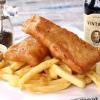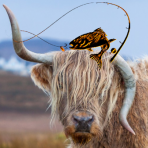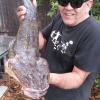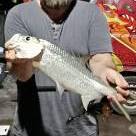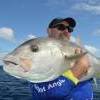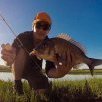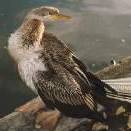
MAH
-
Content Count
193 -
Joined
-
Last visited
-
Days Won
44
Reputation Activity
-
 MAH got a reaction from vogon in Knot help please
MAH got a reaction from vogon in Knot help please
I've practiced this knot a couple of times today and I'm very impressed.
I normally don't like line to leader knots that include a bend in the leader, because I don't like how the line goes through the guides when casting, especially micro guide. I like the tag of the leader going in the same direction as the leader. But with the Yucatan I was able to trim the leader tag super close, so it shouldn't an issue when casting.
-
 MAH got a reaction from doobie in Knot help please
MAH got a reaction from doobie in Knot help please
I've practiced this knot a couple of times today and I'm very impressed.
I normally don't like line to leader knots that include a bend in the leader, because I don't like how the line goes through the guides when casting, especially micro guide. I like the tag of the leader going in the same direction as the leader. But with the Yucatan I was able to trim the leader tag super close, so it shouldn't an issue when casting.
-
 MAH got a reaction from Rob62 in Knot help please
MAH got a reaction from Rob62 in Knot help please
I've practiced this knot a couple of times today and I'm very impressed.
I normally don't like line to leader knots that include a bend in the leader, because I don't like how the line goes through the guides when casting, especially micro guide. I like the tag of the leader going in the same direction as the leader. But with the Yucatan I was able to trim the leader tag super close, so it shouldn't an issue when casting.
-
 MAH got a reaction from Soobz in Knot help please
MAH got a reaction from Soobz in Knot help please
I don't fish much using heavy leaders and have found the slim beauty a great knot. I find the FG knot, when setting the knot, requires you to put the leader under too much strain for light line. The FG knot is completely dependent upon the braid biting into the leader material, which is why you need to put a lot of tension on the lines when setting the knot. Knots like the slim beauty, don't need to bite into the line, because you are wrapping two knots around the lines (a uni knot and variation on a clinch knot) which then are pulled up against each other and can't slide past each other (similar to using a stopper knot).
When tying the slim beauty I don't start like most videos show. In most videos, they say tie a double overhand knot leader, tighten until a figure eight forms and thread the main line through. But if you look at the resulting knot, it's just a 2 turn uni knot. So I tie a 2 turn uni knot. This video demonstrates this nicely (from 1:32 to 2:52).
-

-
 MAH got a reaction from doobie in Temporary Cuttlefish Closure in Northern Spencer Gulf Untill May 13 2023
MAH got a reaction from doobie in Temporary Cuttlefish Closure in Northern Spencer Gulf Untill May 13 2023
Closure time: 14 May 2022 to 13 May 2023
Closure location: Spencer Gulf
from the Mean High Water Springs closest to 33°55’39.942”S 136°34’20.131”E (near Arno Bay) to the Mean High Water Springs closest to 33°55’39.942”S 137°37’14.527”E (Wallaroo Jetty). https://www.pir.sa.gov.au/fishing/closures_and_aquatic_reserves/fishing_closures#toc5
-
 MAH got a reaction from Des in Temporary Cuttlefish Closure in Northern Spencer Gulf Untill May 13 2023
MAH got a reaction from Des in Temporary Cuttlefish Closure in Northern Spencer Gulf Untill May 13 2023
Closure time: 14 May 2022 to 13 May 2023
Closure location: Spencer Gulf
from the Mean High Water Springs closest to 33°55’39.942”S 136°34’20.131”E (near Arno Bay) to the Mean High Water Springs closest to 33°55’39.942”S 137°37’14.527”E (Wallaroo Jetty). https://www.pir.sa.gov.au/fishing/closures_and_aquatic_reserves/fishing_closures#toc5
-
 MAH got a reaction from Softy in Temporary Cuttlefish Closure in Northern Spencer Gulf Untill May 13 2023
MAH got a reaction from Softy in Temporary Cuttlefish Closure in Northern Spencer Gulf Untill May 13 2023
Closure time: 14 May 2022 to 13 May 2023
Closure location: Spencer Gulf
from the Mean High Water Springs closest to 33°55’39.942”S 136°34’20.131”E (near Arno Bay) to the Mean High Water Springs closest to 33°55’39.942”S 137°37’14.527”E (Wallaroo Jetty). https://www.pir.sa.gov.au/fishing/closures_and_aquatic_reserves/fishing_closures#toc5
-
 MAH got a reaction from Des in Land based Squid help
MAH got a reaction from Des in Land based Squid help
I love squid fishing and mainly fish land based, but also get out in the kayak.
As others have mentioned, structure is the key for squid (and basically all fish). If there is a sandy bottom, there is little chance of squid. Wert is spot on, seagrass, reefy bottom, rocky shoreline are the places to fish. For metro spots, you can certainly catch squid at OH. Most people fish the channel/northern side of the OH rockwall, but if fishing the southern side for something like garfish, it's always worth having a jig on hand as you get squid cruising along rockwall face (just not as many).
For metro jetties, Brighton is the most prolific, but also it gets packed (I personally don't like to fish Brighton jetty). Glenelg jetty also produces good catches of squid, just head to end, there is plenty of seagrass to attract squid. This is my local and in the warmer months I regularly have good catches.
I personally believe a good long rod is a key part of success when land based fishing. Most of the metro spots are heavily fished, so if you have a nice long rod and can cast a bit further than the blokes standing next to you, not only can you cover more territory each cast/retrieve, but you will be potentially dropping your jig in front of a squid that others haven't been able to reach. I use an 8'9" Daiwa Emeraldas.
Another thing to consider is the sink rate of your jigs. Squid mainly take a jig on the drop, and close to the bottom. I find I often need to add some extra weight (chin sinker) when fishing Glenelg as the tidal movement can make it hard to get the jig down deep enough. If fishing shallow areas like Marino Rocks, Point Riley or Tickera, it's worth packing some shallow sinking jigs, to give you a bit more time on the drop.
I've posted before on the topic of land based squid fishing, with info on My Squid Rig, and a couple of reports on Glenelg catches, Inkfest and Inkfest 2
-
 MAH got a reaction from Wert in Land based Squid help
MAH got a reaction from Wert in Land based Squid help
I love squid fishing and mainly fish land based, but also get out in the kayak.
As others have mentioned, structure is the key for squid (and basically all fish). If there is a sandy bottom, there is little chance of squid. Wert is spot on, seagrass, reefy bottom, rocky shoreline are the places to fish. For metro spots, you can certainly catch squid at OH. Most people fish the channel/northern side of the OH rockwall, but if fishing the southern side for something like garfish, it's always worth having a jig on hand as you get squid cruising along rockwall face (just not as many).
For metro jetties, Brighton is the most prolific, but also it gets packed (I personally don't like to fish Brighton jetty). Glenelg jetty also produces good catches of squid, just head to end, there is plenty of seagrass to attract squid. This is my local and in the warmer months I regularly have good catches.
I personally believe a good long rod is a key part of success when land based fishing. Most of the metro spots are heavily fished, so if you have a nice long rod and can cast a bit further than the blokes standing next to you, not only can you cover more territory each cast/retrieve, but you will be potentially dropping your jig in front of a squid that others haven't been able to reach. I use an 8'9" Daiwa Emeraldas.
Another thing to consider is the sink rate of your jigs. Squid mainly take a jig on the drop, and close to the bottom. I find I often need to add some extra weight (chin sinker) when fishing Glenelg as the tidal movement can make it hard to get the jig down deep enough. If fishing shallow areas like Marino Rocks, Point Riley or Tickera, it's worth packing some shallow sinking jigs, to give you a bit more time on the drop.
I've posted before on the topic of land based squid fishing, with info on My Squid Rig, and a couple of reports on Glenelg catches, Inkfest and Inkfest 2
-
 MAH got a reaction from Yorky in Land based Squid help
MAH got a reaction from Yorky in Land based Squid help
I love squid fishing and mainly fish land based, but also get out in the kayak.
As others have mentioned, structure is the key for squid (and basically all fish). If there is a sandy bottom, there is little chance of squid. Wert is spot on, seagrass, reefy bottom, rocky shoreline are the places to fish. For metro spots, you can certainly catch squid at OH. Most people fish the channel/northern side of the OH rockwall, but if fishing the southern side for something like garfish, it's always worth having a jig on hand as you get squid cruising along rockwall face (just not as many).
For metro jetties, Brighton is the most prolific, but also it gets packed (I personally don't like to fish Brighton jetty). Glenelg jetty also produces good catches of squid, just head to end, there is plenty of seagrass to attract squid. This is my local and in the warmer months I regularly have good catches.
I personally believe a good long rod is a key part of success when land based fishing. Most of the metro spots are heavily fished, so if you have a nice long rod and can cast a bit further than the blokes standing next to you, not only can you cover more territory each cast/retrieve, but you will be potentially dropping your jig in front of a squid that others haven't been able to reach. I use an 8'9" Daiwa Emeraldas.
Another thing to consider is the sink rate of your jigs. Squid mainly take a jig on the drop, and close to the bottom. I find I often need to add some extra weight (chin sinker) when fishing Glenelg as the tidal movement can make it hard to get the jig down deep enough. If fishing shallow areas like Marino Rocks, Point Riley or Tickera, it's worth packing some shallow sinking jigs, to give you a bit more time on the drop.
I've posted before on the topic of land based squid fishing, with info on My Squid Rig, and a couple of reports on Glenelg catches, Inkfest and Inkfest 2
-
 MAH got a reaction from Sykes in Land based Squid help
MAH got a reaction from Sykes in Land based Squid help
I love squid fishing and mainly fish land based, but also get out in the kayak.
As others have mentioned, structure is the key for squid (and basically all fish). If there is a sandy bottom, there is little chance of squid. Wert is spot on, seagrass, reefy bottom, rocky shoreline are the places to fish. For metro spots, you can certainly catch squid at OH. Most people fish the channel/northern side of the OH rockwall, but if fishing the southern side for something like garfish, it's always worth having a jig on hand as you get squid cruising along rockwall face (just not as many).
For metro jetties, Brighton is the most prolific, but also it gets packed (I personally don't like to fish Brighton jetty). Glenelg jetty also produces good catches of squid, just head to end, there is plenty of seagrass to attract squid. This is my local and in the warmer months I regularly have good catches.
I personally believe a good long rod is a key part of success when land based fishing. Most of the metro spots are heavily fished, so if you have a nice long rod and can cast a bit further than the blokes standing next to you, not only can you cover more territory each cast/retrieve, but you will be potentially dropping your jig in front of a squid that others haven't been able to reach. I use an 8'9" Daiwa Emeraldas.
Another thing to consider is the sink rate of your jigs. Squid mainly take a jig on the drop, and close to the bottom. I find I often need to add some extra weight (chin sinker) when fishing Glenelg as the tidal movement can make it hard to get the jig down deep enough. If fishing shallow areas like Marino Rocks, Point Riley or Tickera, it's worth packing some shallow sinking jigs, to give you a bit more time on the drop.
I've posted before on the topic of land based squid fishing, with info on My Squid Rig, and a couple of reports on Glenelg catches, Inkfest and Inkfest 2
-
 MAH got a reaction from bjorn2fish in Southern Garfish - Best Baits. Can You Match the Hatch?
MAH got a reaction from bjorn2fish in Southern Garfish - Best Baits. Can You Match the Hatch?
A common principle of fishing is to try and match the hatch, or in other words, use bait that is the same or similar to the target fish diet; but considering the primary dietary components of southern garfish are seagrasses of the family Zosteraceae and planktonic amphipods, it's not really possible.
Instead, generations of fishos have used substitute baits for southern garfish including;
maggots bread chicken slivers of garfish Which bait to use seems to be a personal preference (I stick with maggots and chicken).
Maggots
Maggots are probably the most common bait used for southern garfish. Apart from the "yuk" factor at the thought of maggots, they are a great bait to have on hand, they don't, smell, they last for months in the fridge and you get a tub of approx 350 maggots for $6-$8. When fishing maggots, they also stay on the hook well and it takes quite a few bites before you need to re-bait.
Bread
Cheap! Readily available. Can be used both as bait and soaked in water for burley. If you have non-fishing partner, they will not complain about bread in the house (as opposed to a tub of maggots). Downside to bread is you need to re-bait more regularly.
Chicken
It was an old timer on Largs Pier that taught me about chicken for garfish (he also fished off the bottom, not under a float). He used chicken breast, so I have always used chicken breast. Once you have bought the chicken, put into the freezer. When you want to go fishing take it out before, let it partially defrost, so it makes easier to cut even thin slices. I like to take these slices and pat dry with paper towel, to remove as much moisture as possible (the more moisture you remove, the firm it will be and it will stay on the hook better). Next, take the slices and cut them into small slithers ready for your hooks, then put in a container with some breadcrumbs (the breadcrumbs absorb more water and add to the burley trail when fishing). Sometimes I will put some tuna oil on the slithers before adding to breadcrumbs. This is a great bait to have on hand, it's cheap, readily available, you can keep it in the freezer and not yuk out anyone else in the house.
Slivers of Garfish
I've never tried this, but I've heard good reports of taking a few slivers off the first garfish you catch and using this as bait. This is suggested as a way to mix up your bait if the garfish are being timid.
-
 MAH got a reaction from doobie in Southern Garfish - Feeding Habits of South Australian Populations.
MAH got a reaction from doobie in Southern Garfish - Feeding Habits of South Australian Populations.
This information is based on the Honours thesis undertaken by Jason Earl in 2007, through Flinders University. All credit goes Jason for this knowledge.
The information is based upon samples of southern sea garfish that were collected at two locations in Gulf St. Vincent between March and July 2007. Most sampling was conducted at Port Parham, while fewer samples were also taken from Bay of Shoals, Kangaroo Island. Garfish were sampled for this study in two ways: they were purchased from commercial fishers after haul-net capture; and captured at night using dab nets. Hook and line were not used to capture the fish, as the use of foreign dietary items such as burley and bait would have disrupted the analysis of dietary composition. A total of 20 sampling events were undertaken.
The study found that the size of the mouth’s gape, the length of the beak and gut length were all proportional to fish size and these proportions are consistent over time, which does not suggest a major change in the feeding biology from juvenile stages through to adulthood.
The primary dietary components identified were seagrasses of the family Zosteraceae and planktonic amphipods.
Seagrasses were consumed in much greater volume than any other dietary item, followed by amphipods that were also consumed in high volumes. The high volumes of seagrass, may be due to the low nutritional value of seagrass and the inefficient digestion. To compensate for this, southern sea garfish may have to continually consume seagrass to maintain adequate nutrient absorption. Examining the gut contents showed the green, heavily macerated condition of the seagrass was consistently fresh throughout the entire study suggesting that rather than consuming floating detached seagrass fronds, as previously documented , the species may be grazing on live fronds. This assumption is supported by the observations of a commercial fisherman of Port Parham who regularly observed the species actively swimming through live fronds of the zosteraceaen seagrass beds in the area. If this is actually occurring it suggests that the fish are actively biting off seagrass fronds.
Other invertebrates such as polychaetes, insects and other crustaceans were a regular part of the diet, but only in smaller volumes.
Southern sea garfish appear to be selectively choosing their main dietary components, of zosteracean seagrass and amphipods.
Given the diversity of algae and different species of seagrasses distributed throughout the inter- and subtidal areas of the northern Gulf St. Vincent, the garfish that were sampled had exclusively consumed Zosteraceaen seagrasses.
Similarly, plankton tows that were done in the main sampling area at Port Parham revealed many types of hyperbenthic invertebrates available for consumption, yet the consistent consumption of large volumes of amphipods suggests that they were selected by the fish over other food.
The feeding patterns of southern sea garfish followed a strong diurnal cycle; consuming seagrass fronds during the day, to predation of hyperbenthic planktonic invertebrates during the night. The shift from seagrass, which is an unlimited, highly accessible resource, to the nocturnal consumption of invertebrates, coincided with significantly higher abundances of invertebrates in the water column during the night. Hyperbenthic invertebrate species occupy seagrass beds or the sediment during the day to avoid predation and then migrate vertically up into the water column during the night, to facilitate feeding and reproduction.
The study was conducted over autumn and winter and throughout both seasons the diets were dominated by seagrass during the day, before shifting to planktonic invertebrates during the night. Amphipods were the main invertebrates consumed during the night in both seasons while ostracods, cumaceans and nereidid polychaetes were also consumed at various stages. The most significant difference in dietary composition between seasons was the consumption of cirratulid polychaete worms during the early hours of the morning during winter. This species of worm was not apparent in the guts during autumn, but during winter was a very important component of the diet. It is not known whether the worms were excavated by the fish from the substrate or had migrated into the water column.
The feeding habits of the South Australian population of garfish are consistent with the findings for the Victorian population, however comparison between the diets of fish from Port Parham and Kangaroo Island provided some indication for regional variation. While nocturnal predation of amphipods was evident at midnight in fish captured from Port Parham, samples obtained from The Bay of Shoals, Kangaroo Island at the same time of the night contained large volumes of zosteracean seagrass and indicates the results from one area are not directly applicable to other areas where the availability of dietary components may differ.
-
 MAH got a reaction from doobie in Southern Garfish - Best Baits. Can You Match the Hatch?
MAH got a reaction from doobie in Southern Garfish - Best Baits. Can You Match the Hatch?
A common principle of fishing is to try and match the hatch, or in other words, use bait that is the same or similar to the target fish diet; but considering the primary dietary components of southern garfish are seagrasses of the family Zosteraceae and planktonic amphipods, it's not really possible.
Instead, generations of fishos have used substitute baits for southern garfish including;
maggots bread chicken slivers of garfish Which bait to use seems to be a personal preference (I stick with maggots and chicken).
Maggots
Maggots are probably the most common bait used for southern garfish. Apart from the "yuk" factor at the thought of maggots, they are a great bait to have on hand, they don't, smell, they last for months in the fridge and you get a tub of approx 350 maggots for $6-$8. When fishing maggots, they also stay on the hook well and it takes quite a few bites before you need to re-bait.
Bread
Cheap! Readily available. Can be used both as bait and soaked in water for burley. If you have non-fishing partner, they will not complain about bread in the house (as opposed to a tub of maggots). Downside to bread is you need to re-bait more regularly.
Chicken
It was an old timer on Largs Pier that taught me about chicken for garfish (he also fished off the bottom, not under a float). He used chicken breast, so I have always used chicken breast. Once you have bought the chicken, put into the freezer. When you want to go fishing take it out before, let it partially defrost, so it makes easier to cut even thin slices. I like to take these slices and pat dry with paper towel, to remove as much moisture as possible (the more moisture you remove, the firm it will be and it will stay on the hook better). Next, take the slices and cut them into small slithers ready for your hooks, then put in a container with some breadcrumbs (the breadcrumbs absorb more water and add to the burley trail when fishing). Sometimes I will put some tuna oil on the slithers before adding to breadcrumbs. This is a great bait to have on hand, it's cheap, readily available, you can keep it in the freezer and not yuk out anyone else in the house.
Slivers of Garfish
I've never tried this, but I've heard good reports of taking a few slivers off the first garfish you catch and using this as bait. This is suggested as a way to mix up your bait if the garfish are being timid.
-
 MAH got a reaction from projoe in Southern Garfish - Best Baits. Can You Match the Hatch?
MAH got a reaction from projoe in Southern Garfish - Best Baits. Can You Match the Hatch?
A common principle of fishing is to try and match the hatch, or in other words, use bait that is the same or similar to the target fish diet; but considering the primary dietary components of southern garfish are seagrasses of the family Zosteraceae and planktonic amphipods, it's not really possible.
Instead, generations of fishos have used substitute baits for southern garfish including;
maggots bread chicken slivers of garfish Which bait to use seems to be a personal preference (I stick with maggots and chicken).
Maggots
Maggots are probably the most common bait used for southern garfish. Apart from the "yuk" factor at the thought of maggots, they are a great bait to have on hand, they don't, smell, they last for months in the fridge and you get a tub of approx 350 maggots for $6-$8. When fishing maggots, they also stay on the hook well and it takes quite a few bites before you need to re-bait.
Bread
Cheap! Readily available. Can be used both as bait and soaked in water for burley. If you have non-fishing partner, they will not complain about bread in the house (as opposed to a tub of maggots). Downside to bread is you need to re-bait more regularly.
Chicken
It was an old timer on Largs Pier that taught me about chicken for garfish (he also fished off the bottom, not under a float). He used chicken breast, so I have always used chicken breast. Once you have bought the chicken, put into the freezer. When you want to go fishing take it out before, let it partially defrost, so it makes easier to cut even thin slices. I like to take these slices and pat dry with paper towel, to remove as much moisture as possible (the more moisture you remove, the firm it will be and it will stay on the hook better). Next, take the slices and cut them into small slithers ready for your hooks, then put in a container with some breadcrumbs (the breadcrumbs absorb more water and add to the burley trail when fishing). Sometimes I will put some tuna oil on the slithers before adding to breadcrumbs. This is a great bait to have on hand, it's cheap, readily available, you can keep it in the freezer and not yuk out anyone else in the house.
Slivers of Garfish
I've never tried this, but I've heard good reports of taking a few slivers off the first garfish you catch and using this as bait. This is suggested as a way to mix up your bait if the garfish are being timid.
-
 MAH got a reaction from yellow door 1 in Southern Garfish - Best Baits. Can You Match the Hatch?
MAH got a reaction from yellow door 1 in Southern Garfish - Best Baits. Can You Match the Hatch?
A common principle of fishing is to try and match the hatch, or in other words, use bait that is the same or similar to the target fish diet; but considering the primary dietary components of southern garfish are seagrasses of the family Zosteraceae and planktonic amphipods, it's not really possible.
Instead, generations of fishos have used substitute baits for southern garfish including;
maggots bread chicken slivers of garfish Which bait to use seems to be a personal preference (I stick with maggots and chicken).
Maggots
Maggots are probably the most common bait used for southern garfish. Apart from the "yuk" factor at the thought of maggots, they are a great bait to have on hand, they don't, smell, they last for months in the fridge and you get a tub of approx 350 maggots for $6-$8. When fishing maggots, they also stay on the hook well and it takes quite a few bites before you need to re-bait.
Bread
Cheap! Readily available. Can be used both as bait and soaked in water for burley. If you have non-fishing partner, they will not complain about bread in the house (as opposed to a tub of maggots). Downside to bread is you need to re-bait more regularly.
Chicken
It was an old timer on Largs Pier that taught me about chicken for garfish (he also fished off the bottom, not under a float). He used chicken breast, so I have always used chicken breast. Once you have bought the chicken, put into the freezer. When you want to go fishing take it out before, let it partially defrost, so it makes easier to cut even thin slices. I like to take these slices and pat dry with paper towel, to remove as much moisture as possible (the more moisture you remove, the firm it will be and it will stay on the hook better). Next, take the slices and cut them into small slithers ready for your hooks, then put in a container with some breadcrumbs (the breadcrumbs absorb more water and add to the burley trail when fishing). Sometimes I will put some tuna oil on the slithers before adding to breadcrumbs. This is a great bait to have on hand, it's cheap, readily available, you can keep it in the freezer and not yuk out anyone else in the house.
Slivers of Garfish
I've never tried this, but I've heard good reports of taking a few slivers off the first garfish you catch and using this as bait. This is suggested as a way to mix up your bait if the garfish are being timid.
-
 MAH got a reaction from Yorky in Southern Garfish - Feeding Habits of South Australian Populations.
MAH got a reaction from Yorky in Southern Garfish - Feeding Habits of South Australian Populations.
This information is based on the Honours thesis undertaken by Jason Earl in 2007, through Flinders University. All credit goes Jason for this knowledge.
The information is based upon samples of southern sea garfish that were collected at two locations in Gulf St. Vincent between March and July 2007. Most sampling was conducted at Port Parham, while fewer samples were also taken from Bay of Shoals, Kangaroo Island. Garfish were sampled for this study in two ways: they were purchased from commercial fishers after haul-net capture; and captured at night using dab nets. Hook and line were not used to capture the fish, as the use of foreign dietary items such as burley and bait would have disrupted the analysis of dietary composition. A total of 20 sampling events were undertaken.
The study found that the size of the mouth’s gape, the length of the beak and gut length were all proportional to fish size and these proportions are consistent over time, which does not suggest a major change in the feeding biology from juvenile stages through to adulthood.
The primary dietary components identified were seagrasses of the family Zosteraceae and planktonic amphipods.
Seagrasses were consumed in much greater volume than any other dietary item, followed by amphipods that were also consumed in high volumes. The high volumes of seagrass, may be due to the low nutritional value of seagrass and the inefficient digestion. To compensate for this, southern sea garfish may have to continually consume seagrass to maintain adequate nutrient absorption. Examining the gut contents showed the green, heavily macerated condition of the seagrass was consistently fresh throughout the entire study suggesting that rather than consuming floating detached seagrass fronds, as previously documented , the species may be grazing on live fronds. This assumption is supported by the observations of a commercial fisherman of Port Parham who regularly observed the species actively swimming through live fronds of the zosteraceaen seagrass beds in the area. If this is actually occurring it suggests that the fish are actively biting off seagrass fronds.
Other invertebrates such as polychaetes, insects and other crustaceans were a regular part of the diet, but only in smaller volumes.
Southern sea garfish appear to be selectively choosing their main dietary components, of zosteracean seagrass and amphipods.
Given the diversity of algae and different species of seagrasses distributed throughout the inter- and subtidal areas of the northern Gulf St. Vincent, the garfish that were sampled had exclusively consumed Zosteraceaen seagrasses.
Similarly, plankton tows that were done in the main sampling area at Port Parham revealed many types of hyperbenthic invertebrates available for consumption, yet the consistent consumption of large volumes of amphipods suggests that they were selected by the fish over other food.
The feeding patterns of southern sea garfish followed a strong diurnal cycle; consuming seagrass fronds during the day, to predation of hyperbenthic planktonic invertebrates during the night. The shift from seagrass, which is an unlimited, highly accessible resource, to the nocturnal consumption of invertebrates, coincided with significantly higher abundances of invertebrates in the water column during the night. Hyperbenthic invertebrate species occupy seagrass beds or the sediment during the day to avoid predation and then migrate vertically up into the water column during the night, to facilitate feeding and reproduction.
The study was conducted over autumn and winter and throughout both seasons the diets were dominated by seagrass during the day, before shifting to planktonic invertebrates during the night. Amphipods were the main invertebrates consumed during the night in both seasons while ostracods, cumaceans and nereidid polychaetes were also consumed at various stages. The most significant difference in dietary composition between seasons was the consumption of cirratulid polychaete worms during the early hours of the morning during winter. This species of worm was not apparent in the guts during autumn, but during winter was a very important component of the diet. It is not known whether the worms were excavated by the fish from the substrate or had migrated into the water column.
The feeding habits of the South Australian population of garfish are consistent with the findings for the Victorian population, however comparison between the diets of fish from Port Parham and Kangaroo Island provided some indication for regional variation. While nocturnal predation of amphipods was evident at midnight in fish captured from Port Parham, samples obtained from The Bay of Shoals, Kangaroo Island at the same time of the night contained large volumes of zosteracean seagrass and indicates the results from one area are not directly applicable to other areas where the availability of dietary components may differ.
-
 MAH got a reaction from Des in Southern Garfish - Best Baits. Can You Match the Hatch?
MAH got a reaction from Des in Southern Garfish - Best Baits. Can You Match the Hatch?
A common principle of fishing is to try and match the hatch, or in other words, use bait that is the same or similar to the target fish diet; but considering the primary dietary components of southern garfish are seagrasses of the family Zosteraceae and planktonic amphipods, it's not really possible.
Instead, generations of fishos have used substitute baits for southern garfish including;
maggots bread chicken slivers of garfish Which bait to use seems to be a personal preference (I stick with maggots and chicken).
Maggots
Maggots are probably the most common bait used for southern garfish. Apart from the "yuk" factor at the thought of maggots, they are a great bait to have on hand, they don't, smell, they last for months in the fridge and you get a tub of approx 350 maggots for $6-$8. When fishing maggots, they also stay on the hook well and it takes quite a few bites before you need to re-bait.
Bread
Cheap! Readily available. Can be used both as bait and soaked in water for burley. If you have non-fishing partner, they will not complain about bread in the house (as opposed to a tub of maggots). Downside to bread is you need to re-bait more regularly.
Chicken
It was an old timer on Largs Pier that taught me about chicken for garfish (he also fished off the bottom, not under a float). He used chicken breast, so I have always used chicken breast. Once you have bought the chicken, put into the freezer. When you want to go fishing take it out before, let it partially defrost, so it makes easier to cut even thin slices. I like to take these slices and pat dry with paper towel, to remove as much moisture as possible (the more moisture you remove, the firm it will be and it will stay on the hook better). Next, take the slices and cut them into small slithers ready for your hooks, then put in a container with some breadcrumbs (the breadcrumbs absorb more water and add to the burley trail when fishing). Sometimes I will put some tuna oil on the slithers before adding to breadcrumbs. This is a great bait to have on hand, it's cheap, readily available, you can keep it in the freezer and not yuk out anyone else in the house.
Slivers of Garfish
I've never tried this, but I've heard good reports of taking a few slivers off the first garfish you catch and using this as bait. This is suggested as a way to mix up your bait if the garfish are being timid.
-
 MAH got a reaction from Des in Southern Garfish - Feeding Habits of South Australian Populations.
MAH got a reaction from Des in Southern Garfish - Feeding Habits of South Australian Populations.
This information is based on the Honours thesis undertaken by Jason Earl in 2007, through Flinders University. All credit goes Jason for this knowledge.
The information is based upon samples of southern sea garfish that were collected at two locations in Gulf St. Vincent between March and July 2007. Most sampling was conducted at Port Parham, while fewer samples were also taken from Bay of Shoals, Kangaroo Island. Garfish were sampled for this study in two ways: they were purchased from commercial fishers after haul-net capture; and captured at night using dab nets. Hook and line were not used to capture the fish, as the use of foreign dietary items such as burley and bait would have disrupted the analysis of dietary composition. A total of 20 sampling events were undertaken.
The study found that the size of the mouth’s gape, the length of the beak and gut length were all proportional to fish size and these proportions are consistent over time, which does not suggest a major change in the feeding biology from juvenile stages through to adulthood.
The primary dietary components identified were seagrasses of the family Zosteraceae and planktonic amphipods.
Seagrasses were consumed in much greater volume than any other dietary item, followed by amphipods that were also consumed in high volumes. The high volumes of seagrass, may be due to the low nutritional value of seagrass and the inefficient digestion. To compensate for this, southern sea garfish may have to continually consume seagrass to maintain adequate nutrient absorption. Examining the gut contents showed the green, heavily macerated condition of the seagrass was consistently fresh throughout the entire study suggesting that rather than consuming floating detached seagrass fronds, as previously documented , the species may be grazing on live fronds. This assumption is supported by the observations of a commercial fisherman of Port Parham who regularly observed the species actively swimming through live fronds of the zosteraceaen seagrass beds in the area. If this is actually occurring it suggests that the fish are actively biting off seagrass fronds.
Other invertebrates such as polychaetes, insects and other crustaceans were a regular part of the diet, but only in smaller volumes.
Southern sea garfish appear to be selectively choosing their main dietary components, of zosteracean seagrass and amphipods.
Given the diversity of algae and different species of seagrasses distributed throughout the inter- and subtidal areas of the northern Gulf St. Vincent, the garfish that were sampled had exclusively consumed Zosteraceaen seagrasses.
Similarly, plankton tows that were done in the main sampling area at Port Parham revealed many types of hyperbenthic invertebrates available for consumption, yet the consistent consumption of large volumes of amphipods suggests that they were selected by the fish over other food.
The feeding patterns of southern sea garfish followed a strong diurnal cycle; consuming seagrass fronds during the day, to predation of hyperbenthic planktonic invertebrates during the night. The shift from seagrass, which is an unlimited, highly accessible resource, to the nocturnal consumption of invertebrates, coincided with significantly higher abundances of invertebrates in the water column during the night. Hyperbenthic invertebrate species occupy seagrass beds or the sediment during the day to avoid predation and then migrate vertically up into the water column during the night, to facilitate feeding and reproduction.
The study was conducted over autumn and winter and throughout both seasons the diets were dominated by seagrass during the day, before shifting to planktonic invertebrates during the night. Amphipods were the main invertebrates consumed during the night in both seasons while ostracods, cumaceans and nereidid polychaetes were also consumed at various stages. The most significant difference in dietary composition between seasons was the consumption of cirratulid polychaete worms during the early hours of the morning during winter. This species of worm was not apparent in the guts during autumn, but during winter was a very important component of the diet. It is not known whether the worms were excavated by the fish from the substrate or had migrated into the water column.
The feeding habits of the South Australian population of garfish are consistent with the findings for the Victorian population, however comparison between the diets of fish from Port Parham and Kangaroo Island provided some indication for regional variation. While nocturnal predation of amphipods was evident at midnight in fish captured from Port Parham, samples obtained from The Bay of Shoals, Kangaroo Island at the same time of the night contained large volumes of zosteracean seagrass and indicates the results from one area are not directly applicable to other areas where the availability of dietary components may differ.
-
 MAH got a reaction from Des in Southern Garfish (Hyporhamphus Melanochir) - South Australian Fishing Limits
MAH got a reaction from Des in Southern Garfish (Hyporhamphus Melanochir) - South Australian Fishing Limits
This will be a series of posts about Southern Garfish (Hyporhamphus Melanochir), starting with basic information on fishing limits. Other posts will cover feeding habits and different approaches to catching these mini marlins.
This information is accurate as of 13/04/2022, please check the PIRSA website for updates.
Minimum legal length: 23 cm measured from tip of the upper jaw to the tip of the tail. Personal daily bag limit: 30 Daily boat limit when 3 or more people are fishing on board: 90
-
 MAH got a reaction from imfishn in Southern Garfish - Best Baits. Can You Match the Hatch?
MAH got a reaction from imfishn in Southern Garfish - Best Baits. Can You Match the Hatch?
A common principle of fishing is to try and match the hatch, or in other words, use bait that is the same or similar to the target fish diet; but considering the primary dietary components of southern garfish are seagrasses of the family Zosteraceae and planktonic amphipods, it's not really possible.
Instead, generations of fishos have used substitute baits for southern garfish including;
maggots bread chicken slivers of garfish Which bait to use seems to be a personal preference (I stick with maggots and chicken).
Maggots
Maggots are probably the most common bait used for southern garfish. Apart from the "yuk" factor at the thought of maggots, they are a great bait to have on hand, they don't, smell, they last for months in the fridge and you get a tub of approx 350 maggots for $6-$8. When fishing maggots, they also stay on the hook well and it takes quite a few bites before you need to re-bait.
Bread
Cheap! Readily available. Can be used both as bait and soaked in water for burley. If you have non-fishing partner, they will not complain about bread in the house (as opposed to a tub of maggots). Downside to bread is you need to re-bait more regularly.
Chicken
It was an old timer on Largs Pier that taught me about chicken for garfish (he also fished off the bottom, not under a float). He used chicken breast, so I have always used chicken breast. Once you have bought the chicken, put into the freezer. When you want to go fishing take it out before, let it partially defrost, so it makes easier to cut even thin slices. I like to take these slices and pat dry with paper towel, to remove as much moisture as possible (the more moisture you remove, the firm it will be and it will stay on the hook better). Next, take the slices and cut them into small slithers ready for your hooks, then put in a container with some breadcrumbs (the breadcrumbs absorb more water and add to the burley trail when fishing). Sometimes I will put some tuna oil on the slithers before adding to breadcrumbs. This is a great bait to have on hand, it's cheap, readily available, you can keep it in the freezer and not yuk out anyone else in the house.
Slivers of Garfish
I've never tried this, but I've heard good reports of taking a few slivers off the first garfish you catch and using this as bait. This is suggested as a way to mix up your bait if the garfish are being timid.
-
 MAH got a reaction from Yorky in Southern Garfish - Best Baits. Can You Match the Hatch?
MAH got a reaction from Yorky in Southern Garfish - Best Baits. Can You Match the Hatch?
A common principle of fishing is to try and match the hatch, or in other words, use bait that is the same or similar to the target fish diet; but considering the primary dietary components of southern garfish are seagrasses of the family Zosteraceae and planktonic amphipods, it's not really possible.
Instead, generations of fishos have used substitute baits for southern garfish including;
maggots bread chicken slivers of garfish Which bait to use seems to be a personal preference (I stick with maggots and chicken).
Maggots
Maggots are probably the most common bait used for southern garfish. Apart from the "yuk" factor at the thought of maggots, they are a great bait to have on hand, they don't, smell, they last for months in the fridge and you get a tub of approx 350 maggots for $6-$8. When fishing maggots, they also stay on the hook well and it takes quite a few bites before you need to re-bait.
Bread
Cheap! Readily available. Can be used both as bait and soaked in water for burley. If you have non-fishing partner, they will not complain about bread in the house (as opposed to a tub of maggots). Downside to bread is you need to re-bait more regularly.
Chicken
It was an old timer on Largs Pier that taught me about chicken for garfish (he also fished off the bottom, not under a float). He used chicken breast, so I have always used chicken breast. Once you have bought the chicken, put into the freezer. When you want to go fishing take it out before, let it partially defrost, so it makes easier to cut even thin slices. I like to take these slices and pat dry with paper towel, to remove as much moisture as possible (the more moisture you remove, the firm it will be and it will stay on the hook better). Next, take the slices and cut them into small slithers ready for your hooks, then put in a container with some breadcrumbs (the breadcrumbs absorb more water and add to the burley trail when fishing). Sometimes I will put some tuna oil on the slithers before adding to breadcrumbs. This is a great bait to have on hand, it's cheap, readily available, you can keep it in the freezer and not yuk out anyone else in the house.
Slivers of Garfish
I've never tried this, but I've heard good reports of taking a few slivers off the first garfish you catch and using this as bait. This is suggested as a way to mix up your bait if the garfish are being timid.
-
 MAH got a reaction from Wert in Southern Garfish - Best Baits. Can You Match the Hatch?
MAH got a reaction from Wert in Southern Garfish - Best Baits. Can You Match the Hatch?
A common principle of fishing is to try and match the hatch, or in other words, use bait that is the same or similar to the target fish diet; but considering the primary dietary components of southern garfish are seagrasses of the family Zosteraceae and planktonic amphipods, it's not really possible.
Instead, generations of fishos have used substitute baits for southern garfish including;
maggots bread chicken slivers of garfish Which bait to use seems to be a personal preference (I stick with maggots and chicken).
Maggots
Maggots are probably the most common bait used for southern garfish. Apart from the "yuk" factor at the thought of maggots, they are a great bait to have on hand, they don't, smell, they last for months in the fridge and you get a tub of approx 350 maggots for $6-$8. When fishing maggots, they also stay on the hook well and it takes quite a few bites before you need to re-bait.
Bread
Cheap! Readily available. Can be used both as bait and soaked in water for burley. If you have non-fishing partner, they will not complain about bread in the house (as opposed to a tub of maggots). Downside to bread is you need to re-bait more regularly.
Chicken
It was an old timer on Largs Pier that taught me about chicken for garfish (he also fished off the bottom, not under a float). He used chicken breast, so I have always used chicken breast. Once you have bought the chicken, put into the freezer. When you want to go fishing take it out before, let it partially defrost, so it makes easier to cut even thin slices. I like to take these slices and pat dry with paper towel, to remove as much moisture as possible (the more moisture you remove, the firm it will be and it will stay on the hook better). Next, take the slices and cut them into small slithers ready for your hooks, then put in a container with some breadcrumbs (the breadcrumbs absorb more water and add to the burley trail when fishing). Sometimes I will put some tuna oil on the slithers before adding to breadcrumbs. This is a great bait to have on hand, it's cheap, readily available, you can keep it in the freezer and not yuk out anyone else in the house.
Slivers of Garfish
I've never tried this, but I've heard good reports of taking a few slivers off the first garfish you catch and using this as bait. This is suggested as a way to mix up your bait if the garfish are being timid.
-
 MAH got a reaction from Wert in Southern Garfish - Feeding Habits of South Australian Populations.
MAH got a reaction from Wert in Southern Garfish - Feeding Habits of South Australian Populations.
This information is based on the Honours thesis undertaken by Jason Earl in 2007, through Flinders University. All credit goes Jason for this knowledge.
The information is based upon samples of southern sea garfish that were collected at two locations in Gulf St. Vincent between March and July 2007. Most sampling was conducted at Port Parham, while fewer samples were also taken from Bay of Shoals, Kangaroo Island. Garfish were sampled for this study in two ways: they were purchased from commercial fishers after haul-net capture; and captured at night using dab nets. Hook and line were not used to capture the fish, as the use of foreign dietary items such as burley and bait would have disrupted the analysis of dietary composition. A total of 20 sampling events were undertaken.
The study found that the size of the mouth’s gape, the length of the beak and gut length were all proportional to fish size and these proportions are consistent over time, which does not suggest a major change in the feeding biology from juvenile stages through to adulthood.
The primary dietary components identified were seagrasses of the family Zosteraceae and planktonic amphipods.
Seagrasses were consumed in much greater volume than any other dietary item, followed by amphipods that were also consumed in high volumes. The high volumes of seagrass, may be due to the low nutritional value of seagrass and the inefficient digestion. To compensate for this, southern sea garfish may have to continually consume seagrass to maintain adequate nutrient absorption. Examining the gut contents showed the green, heavily macerated condition of the seagrass was consistently fresh throughout the entire study suggesting that rather than consuming floating detached seagrass fronds, as previously documented , the species may be grazing on live fronds. This assumption is supported by the observations of a commercial fisherman of Port Parham who regularly observed the species actively swimming through live fronds of the zosteraceaen seagrass beds in the area. If this is actually occurring it suggests that the fish are actively biting off seagrass fronds.
Other invertebrates such as polychaetes, insects and other crustaceans were a regular part of the diet, but only in smaller volumes.
Southern sea garfish appear to be selectively choosing their main dietary components, of zosteracean seagrass and amphipods.
Given the diversity of algae and different species of seagrasses distributed throughout the inter- and subtidal areas of the northern Gulf St. Vincent, the garfish that were sampled had exclusively consumed Zosteraceaen seagrasses.
Similarly, plankton tows that were done in the main sampling area at Port Parham revealed many types of hyperbenthic invertebrates available for consumption, yet the consistent consumption of large volumes of amphipods suggests that they were selected by the fish over other food.
The feeding patterns of southern sea garfish followed a strong diurnal cycle; consuming seagrass fronds during the day, to predation of hyperbenthic planktonic invertebrates during the night. The shift from seagrass, which is an unlimited, highly accessible resource, to the nocturnal consumption of invertebrates, coincided with significantly higher abundances of invertebrates in the water column during the night. Hyperbenthic invertebrate species occupy seagrass beds or the sediment during the day to avoid predation and then migrate vertically up into the water column during the night, to facilitate feeding and reproduction.
The study was conducted over autumn and winter and throughout both seasons the diets were dominated by seagrass during the day, before shifting to planktonic invertebrates during the night. Amphipods were the main invertebrates consumed during the night in both seasons while ostracods, cumaceans and nereidid polychaetes were also consumed at various stages. The most significant difference in dietary composition between seasons was the consumption of cirratulid polychaete worms during the early hours of the morning during winter. This species of worm was not apparent in the guts during autumn, but during winter was a very important component of the diet. It is not known whether the worms were excavated by the fish from the substrate or had migrated into the water column.
The feeding habits of the South Australian population of garfish are consistent with the findings for the Victorian population, however comparison between the diets of fish from Port Parham and Kangaroo Island provided some indication for regional variation. While nocturnal predation of amphipods was evident at midnight in fish captured from Port Parham, samples obtained from The Bay of Shoals, Kangaroo Island at the same time of the night contained large volumes of zosteracean seagrass and indicates the results from one area are not directly applicable to other areas where the availability of dietary components may differ.



